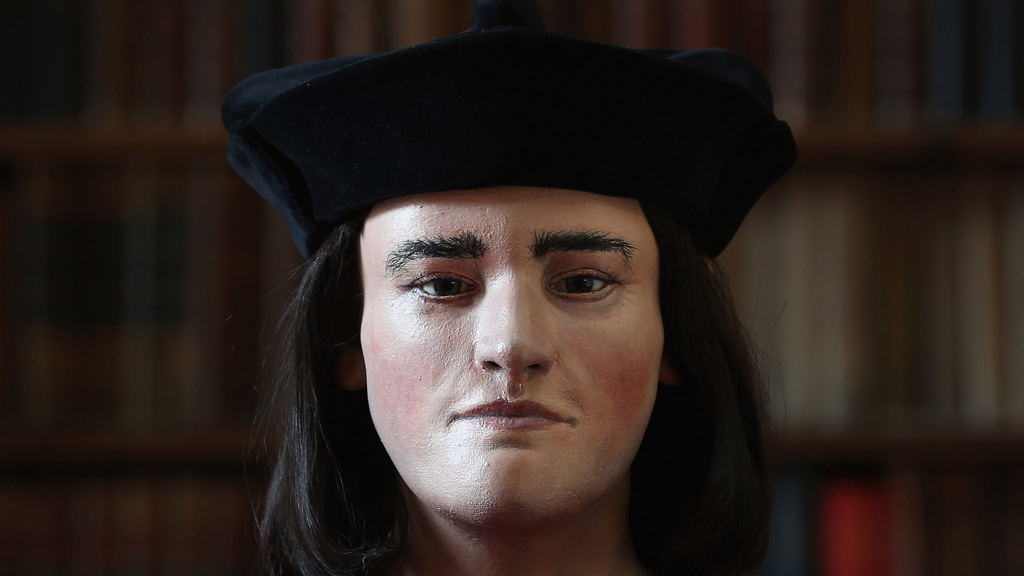Car park skeleton confirmed as Richard III
Researchers from the University of Leicester confirm that a skeleton found under a car park is that of King Richard III following extensive testing.

A series of papers presented at a news conference earlier detailed the highly-anticipated results of tests carried out on a skeleton thought to belong to Richard III, who died in battle more than 500 years ago.
Richard Buckley, dig project leader, said: “It is the academic conclusion that beyond reasonable doubt, the individual exhumed at Grey Friars in September 2011 is King Richard III – the last Plantagenet king of England.”
After suffering at least two fatal head wounds, tests on his skull and body reveal he was brutally hacked after falling and dying during combat in 1485. Richard was cut down at the bloody Battle of Bosworth Field, ending the Wars of the Roses and leaving Henry VII as the new king and first of the Tudor dynasty.
During Monday's presentation, investigators thanked Channel 4 for the role it played in solving the mystery. The documentary Richard III: The King in the Car Park airs tonight at 9pm followed at 10.35pm by a live online Q&A with Philippa Langley, member of the Richard III society, and Professor Lin Foxhall, Head of the School of Archaeology and Ancient History at the University of Leicester.
Philippa Langley, from the Richard III Society, said: “The men who knew him said he was ‘the most famous prince of best memory’.
“When he fell he was stripped naked and his scoliosis (curved spine) became known and was used to denigrate him.
“Today, we find the idea of using physical disability against a person as abhorrent. Let this now be a break from the Tudor medieval mindset.”
DNA recovered from the remains, radio-carbon dating, battlefield wounds found on the skeleton, and the link between what was found during the dig and what was mentioned in documentary sources from the period, combined to allow Leicester University academics to today conclude the identity was “beyond reasonable doubt”.
It was also confirmed the remains will be interred at a ceremony in Leicester cathedral.
‘Humiliation’ injuries
Four years ago a fund-raising drive by the Richard III Society embarked on a push to finally uncover the truth of his final resting place, by making an archaeological dig on the site of the friary – a modern-day city council car park.
Archaeologists from the University of Leicester recovered a body which showed signs of battle injuries including 10 separate wounds, and scoliosis, in tune with historic accounts of the monarch. Significant weight was placed on the DNA evidence, linking Richard to a living descendant, Michael Ibsen, through the female line of Anne of York.
Studies of the bones revealed the man was in his late 20s to late 30s – the king was killed when he was 32 – while radio-carbon dating revealed the male died in the second half of the 15th century or the early 16th century, which is consistent with the Wars of the Roses.
Further study showed the remains to be those of a man of 5ft 8in, with what academics called an “unusually slender build” for a male.
The male had 10 wounds on his body, with two principal head wounds which were likely to have killed him – one delivered by a sword and the other likely to have come from a long-handled pole arm, thought to be a halberd.
More gruesome was evidence of “humiliation” injuries, including several head wounds – part of the skull was sliced away – a cut to the rib cage and a pelvic wound likely caused by an upward thrust of a weapon through the buttock.
‘My kingdom for a horse!’
Richard III was born in 1452 at Fotheringay Castle in Northamptonshire and was the last Yorkist king of England. His father was Richard Plantagenet, Duke of York, and his mother Cecily Neville.
He died at the battle of Bosworth but the exact location of his remains was lost due to 500 years of development in the town. His death marked the end of the bloody War of the Roses, one of the major causes of which was his father’s conflict with Henry VI.
Shakespeare portrayed the king exclaiming: “A horse! A horse! My kindgom for a horse!”
-
Latest news




